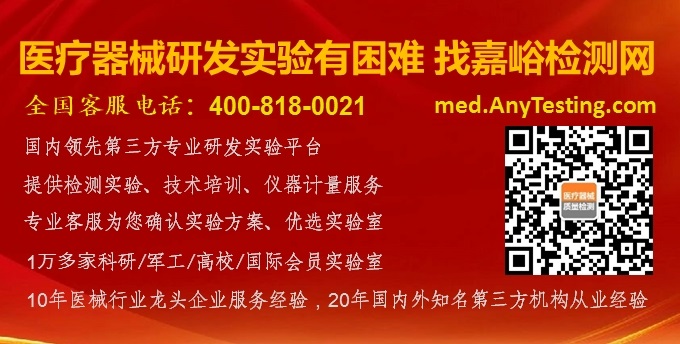您当前的位置:检测资讯 > 法规标准
嘉峪检测网 2025-01-16 09:47
2025年1月7日美国FDA发布的脉搏血氧仪指南草案“Pulse Oximeters for Medical Purposes - Non-Clinical and Clinical Performance Testing, Labeling, and Premarket Submission Recommendations”,在业界引起了较大的轰动。
本篇文章总结此血氧指南草案中关于所有血氧仪Labeling都需要满足的通用要求。
目前适用的2013年的最终血氧指南对所有血氧仪的labeling是统一的要求,但是在此次发布的新血氧指南草案中,将血氧仪Labeling的要求按照以下产品类型进行区分:
· 所有脉搏血氧仪;
· 处方脉搏血氧仪;
· OTC脉搏血氧仪;
· 之前通过510(k)审核的脉搏血氧仪。
1、所有脉搏血氧仪的标签都需满足的要求
对于所有处方和OTC脉搏血氧仪,FDA建议满足以下要求:
1) 对于包装标签,包括以下两则声明:
①用于医疗目的的显著声明;
②已确认的无差异性能的声明,如"This pulse oximeter has been evaluated to perform comparably across groups of individuals with a wide variety of skin tones based on [details provided consistent with the study conducted]."
2) 对于说明书,包括以下信息:
① 无差异性能的声明,要求同包装标签;
② 使用适应症;
包括器械预期的所有条件、用途,或使用相关的声明,如:
* for use as a stand-alone device or a multi-parameter module;
* for use in spot-checking, continuous real-time monitoring or continuous data archiving;
* for prescription or OTC use;
* for use in specific patient population(s);
* for low perfusion conditions;
* for in motion conditions (e.g., walking, fidgeting);
* for single use or multi-use;
* for out-of-hospital transport; and/or
* for home use.
③ 设备描述
FDA建议附上脉搏血氧仪的描述,以识别重要信息,例如:
* 器械如何实现其预期用途的科学原理(如功能性氧饱和度);
* 传感器配置/几何形状(例如,反射率vs.透射率);
* 推荐的应用位置和相关解剖尺寸;
* 设计特征(如功能、警报);
* 所有患者接口附件(例如,患者电缆、延长电缆、传感器、绷带);
* 器械和附件是否无菌提供;
* 器械是否为再加工的一次性器械;
* 为用户提供的用于评估数据质量的输出描述,包括精确脉搏血氧仪性能的百分比调制范围(信号质量指标);以及
* 器械设置和操作信息。
④ 警告信息
FDA建议制造商在使用说明中突出显示适当的警告,说明如何避免已知的危险和/或了解与使用脉搏血氧仪相关的某些相关风险或安全信息。我们认为此类警告应告知患者/使用者已知的危险和其他相关信息,例如:
•Only a health care provider can diagnose medical conditions;
• Reliance solely on a pulse oximeter to detect health conditions or blood oxygen levels may delay seeking and receiving of appropriate and timely medical attention;
•Pay attention to other signs or symptoms of low oxygen levels;
•Initiating or increasing therapy due to pulse oximeter readings without consulting a health care provider is not intended and may lead to harm;
•Pulse oximeters may not accurately estimate blood oxygenation and there is a range of uncertainty about the displayed SpO2 value as to the true blood oxygenation level. SpO2
error may increase with decreasing true blood oxygenation level;
•Differences in skin pigmentation may cause differences in pulse oximeter sensor performance and thereby impact SpO2 readings, especially in very low oxygen levels;
•Trends in measurement may be more meaningful than one single measurement;
•Not all blood oxygenation values have been verified with clinical performance testing; see overview of performance studies for range of SaO2 values tested for this device;
•Environmental and physiologic conditions may contribute to poor pulse oximeter performance or adverse events;
•Continuous use longer than recommended in the labeling may incur patient injury;
•Continuous sensor wear that restrict movement(s) may interfere with normal activity and age-appropriate development (e.g., turning over, crawling, standing, walking, playing);
•Alarms or alerts may interfere with sleep stages of user and caregiver(s).
更多警告相关的信息,请见此指南中的附录A。
⑤ 预防措施
建议制造商在使用说明中突出显示关于在患者身上使用该设备的适当注意事项,包括患有以下疾病的患者:
* 对患者接触的材料过敏;和
* 传感器应用部位的皮肤完整性差。
⑥ 用法说明
FDA建议制造商提供清晰简单的使用说明书,以确保用户了解如何最好地应用脉搏血氧仪传感器,以安全有效地使用设备。FDA建议说明书能解决以下问题的相关信息:
* 优化氧饱和度测量的说明应考虑最佳位置(如解剖位置和几何形状)、条件和稳定的SpO2值(如有);
* 关于如何评估/使用信号质量指标(如调制百分比)和理解波形(如有)的说明;
* 对于准确的SpO2和脉率值,考虑信号不足的说明(例如,由于信号强度低、读数不稳定);
* 考虑百分比调制范围(如有),以及提高百分比调制以实现精确脉搏血氧计性能的方法;
* 皮肤完整性应用部位检查频率的说明;
* 传感器重新定位到不同测量位置的频率说明;以及
* 设备服务和维护信息,包括可重复使用的脉搏血氧仪和附件的清洁和消毒说明。
该指南附录A中提供了可能包含的使用说明书内容示例。
⑦ MR安全信息
建议参考FDA磁共振环境中医疗器械安全测试和标签指南,并使用ASTM F2503标准中的术语和符号。

来源:医疗器械法规资讯


